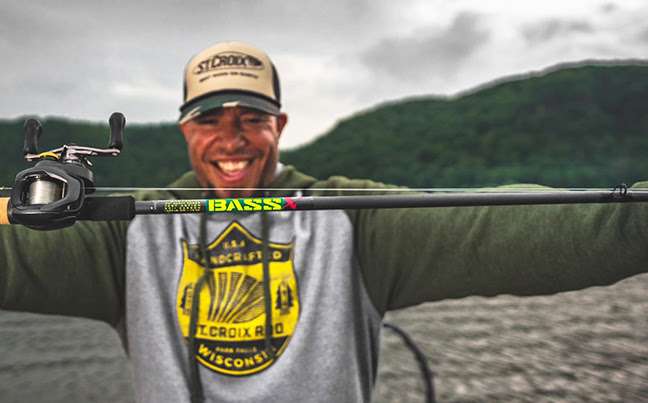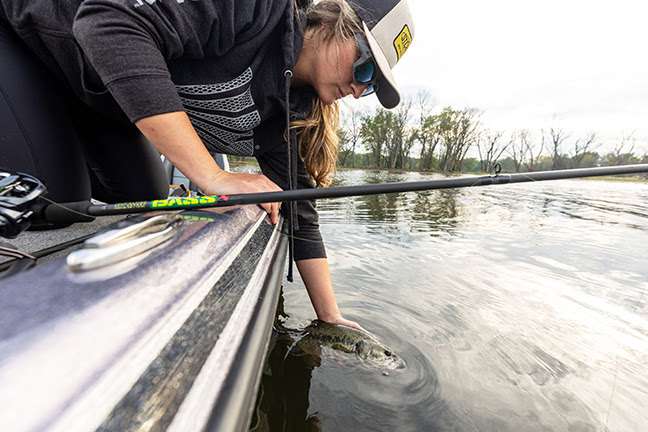
PARK FALLS, Wisc. – It’s a new year, and if you’ve resolved to take steps to improve your bass-angling success and enjoyment in 2022, you’re reading the right article.
We all have our own confidence lures and presentations. But what happens when these go-to techniques fail to produce? Well, you either adapt or go home disappointed. That’s why learning a new technique or presentation – or refining one you’ve dabbled in – is one of the easiest ways to become a more effective bass angler.
We asked four of our St. Croix pros to tell us a bit about one of their favorite bass presentations. We hope the information they share will arm you with the information and confidence you’ll need to give these techniques a try – or improve your skills and success with them – in the coming season.
Jerkbaits with Dax Szegda, Chetek, Wisconsin
Dax Szegda has guided anglers in Northwest Wisconsin for the past 14 years while also pursuing a busy tournament schedule. “I fish anywhere where smallmouth bass live and wherever my tournaments take me,” he says. “I love fishing for anything, but there’s something about putting five big bass in the livewell on tournament day or hunting for a giant smallmouth and looking into those red eyes before letting it go. That’s what it’s all about for me.”
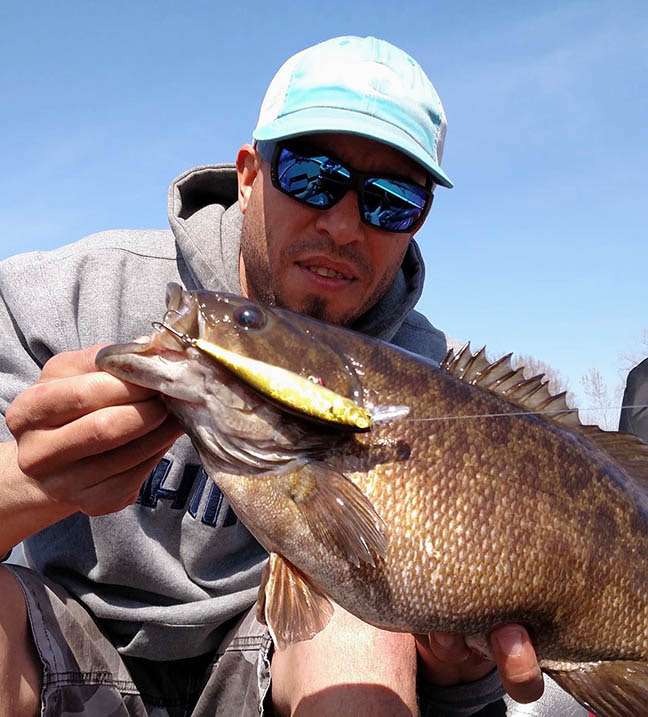
Unlike many anglers who use them only in the spring, jerkbaits are a primary confidence presentation for Szegda on both largemouth and smallmouth bass year ‘round. “Where we live in Wisconsin, the bass season is open all year, so the hunt never stops for the next six pounder. I think a lot of anglers think of a jerkbait as a springtime bait because there are often a lot of bass schooled up together at that time of the year,” Szegda says. “Jerkbaits are effective because they are really good at triggering a feeding response from fish. In my opinion, they’re the best at that, because they do such a great job at tricking bass into eating, even when they are neutral or inactive. When bass are schooling, the competition factor kicks in so you can trigger a bunch of fish at once and catch multiple bass from the same school. But anglers should understand that jerkbaits can have the same effect on individual fish at any time of the year. All you have to do is dial in your presentation.”
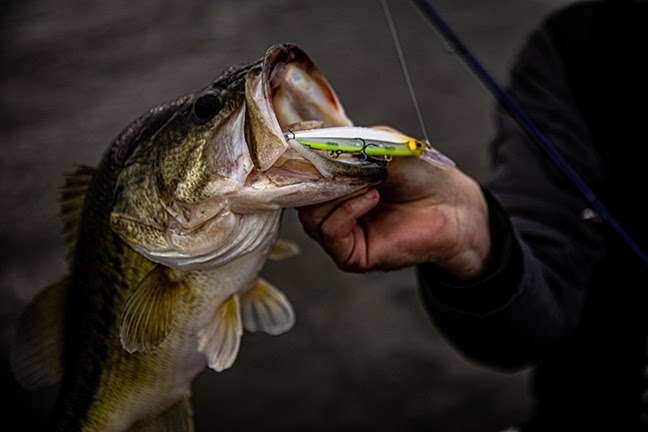
As their name implies, jerkbaits get their action from the angler jerking the rod tip and then pausing. This causes the thin-profiled neutrally buoyant lure to slash erratically, then pause motionless. Szegda says the most important factor to consider when using a jerkbait is the cadence. “It can be a jerk, jerk, pause or a jerk, pause, jerk, or something else similar depending on the conditions and what the fish want that day,” he says. “Whatever you do cadence-wise, it’s important to create a clear and sustained pause with no forward movement of the bait. A slow rise or a slow fall is okay on the pause, but I’ve learned that you want to avoid any forward movement or wobble during that pause.” Szegda says slack line is the key to making this happen. “After you jerk the rod to slash the bait, move your rod tip back forward to ensure there’s slack in the line. And when you reel up your slack during the pause, don’t reel it up so the line is tight. You always want to leave a little slack in the line before you start your next jerk. That ensures the lure will just sit there suspended, which is when the bass tend to grab it.”
Szegda fishes his jerkbaits on 12-pound fluorocarbon line. He prefers a baitcasting rod and reel but says the presentation can be effectively fished on spinning gear, too. “The rod itself is most important,” he advises. “You need something with a fast or extra-fast tip so you can impart that slashing action with a quick, sharp jerk of the rod. Beyond that, you want something with medium power that’s light, crisp and comfortable in the hand; something around 6’6” in length with a good handle design that minimizes fatigue makes a great jerkbait rod. That’s important because it takes a lot of effort and wrist movement on the part of the angler to fish a jerkbait effectively.”
Szegda says St. Croix’s BassX BAC68MXF is ideal for jerkbait fishing. “This rod is rated for 8-14-pound line and lures between ¼ and 5/8 ounce, so it’s perfect for most jerkbaits. It’s got that sweet extra-fast action, only weighs 3.4 ounces, and has a short, split-grip handle that really seems custom-made for jerkbait fishing. St. Croix makes a ton of different medium power extra-fast action rods across a variety of different series and price points, but for me, the BassX model at just $140 has everything I need in a jerkbait rod.”

As with any other technique, Szegda says anglers simply need to put the time in on the water to improve their jerkbait fishing. “Fishing a specific technique or tying a knot or getting good at finding the best fishing spots all comes with time on the water,” he says. “Every day is a learning experience, so treat them that way. Pay attention to the small details, practice, adjust when things don’t work as you hoped, and you’ll eventually get a system dialed in and jerkbait fishing will become second nature. You’ll be a better angler and then you can move on to the next technique.”
Punchin’ with Kyle Grover, Rancho Santa Margarita, California
St. Croix Pro, Kyle Grover, has bass fishing flowing through his veins. His grandfather, John Storie, founded Champion Boats and his parents own one of the largest bass boat dealership in the Western United States, Anglers Marine in Anaheim, which also includes a tackle shop. He works in sales there and also fishes a busy schedule of Western MLF Toyota Series and Bassmaster St. Croix Western Opens Series tournaments.
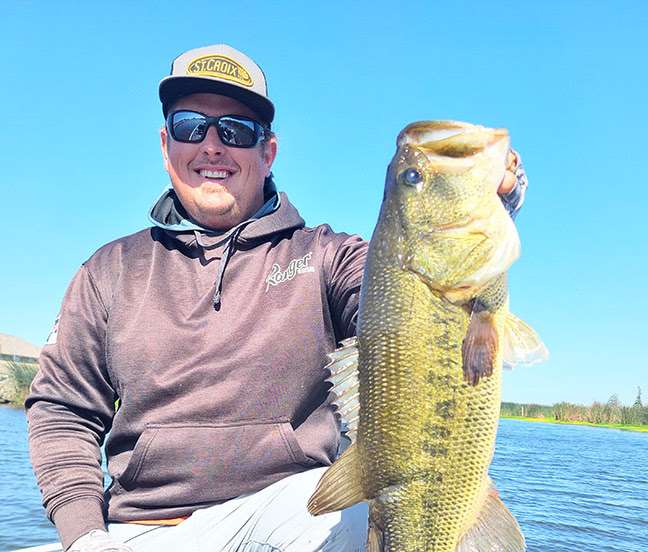
Over many years fishing the California Delta and Clear Lake in Northern California, Grover has become one of the best in the business at punching grass. “Thick, matted vegetation is so prevalent in so many of our western lakes that you’ve just got to be proficient with this technique to have success out here,” Grover says. “But learning how to get good at punching can pay dividends just about anywhere. From the spring all the way through the fall I’ve got at least two punchin’ setups on the deck of my boat.”
Punching involves the use of long, powerful rods and heavy, streamlined jigs to penetrate into the thick beds of hyacinth, hydrilla and other weed growth that provide food, oxygen, shade and ambush cover for big bass. Success comes from first getting the lure down into a bass’s strike window, then having the power to get the fish – and sometimes pounds of attached vegetation – out of the weeds and back to the boat.
Grover agrees with Szegda that time on the water is the best teacher, no matter what technique you’re trying to learn or improve. “You will never get better at punching until you get out on a lake that has grass, put the rod in your hands, and just punch into as many mats as you can.”
Typical punching rigs consist of a 1-2-ounce weight threaded onto the line and terminated at a 3/0 to 5/0 hook, which can be rigged weedless, Texas-style, with a variety of soft plastics. Standard conical lead weights can be used, but many anglers opt for specialized tungsten punchin’ weights shaped to penetrate vegetation much easier. Hooks are also commonly snelled directly to a braided mainline for maximum strength. Due to the thickness of the weeds, leaders are rarely used or considered necessary. The rig is pitched and wiggled as necessary to penetrate into the cover, then slowly brought back towards the boat with a crawl, lift, bump, and fall retrieve.
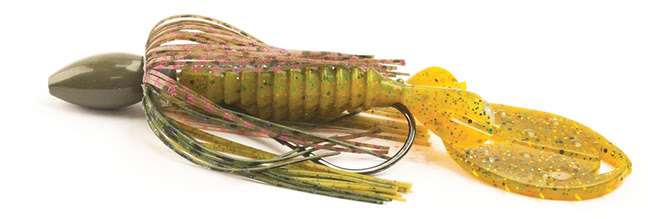
Grover says once a bass eats, the hookset is critical. “Never slack set the hook when you are punching. When you get the bite, you reel all the way down to eliminate all slack and then it’s a heavy lift,” he advises. “If you watch any of the pros doing this on TV or YouTube, you’ll see the same type of hookset from every one of them; reel all the slack out of the line, lift up, and hang on.”
Some anglers new to punching think they need a broom stick for a rod. “You definitely want a longer rod with a lot of power, but combined with a more moderate action,” Grover says. “The new St. Croix BassX BAC711HMF is just the ticket. It’s got that little bit of tip you need to maintain contact and get feedback from that heavy lure, plus all the backbone you need to drive a big hook home and get the fish out of the heavy mats. Extra length helps in picking upline and tapping the rod’s power a lot more quickly.”
Aside from the BAC711HMF’s ideal length, power and action, Grover says St. Croix created a punchin’ rod that feels surprisingly light and well balanced. “That’s not easy to do with a long, powerful fishing rod, especially one in the $100 – $150 price range. When you are dropping that 1-2-ounce weight into mats over and over again throughout the course of an entire day, it can get tiring if you don’t have a light and balanced rod with a comfortable grip and handle. In my experience, rods in this price range usually feel off-balance the second you pick them up. That’s not the case with this or any of the BassX rods I’ve fished. They deliver exceptional feel and performance at a really accessible price. That value is important to me because you want to use the lightest weight you can get by with. You will be punching a thick hyacinth mat one minute and then come to a patch of hydrilla the next, so I need to have up to three punchin’ rods rigged and ready to go at any one time.”
Swimbaits with Robbie Mendez, Jacksonville, Florida
St. Croix Pro, Robbie Mendez, is a tournament kayak angler who loves helping others just starting out to experience more fishing success via his social media channels. From his home in Jacksonville, Florida, Mendez has access to great, big-bass-fishing opportunities. “I like to help shorten the learning curve for new anglers, and my social media interactions provide a lot of opportunities for me to learn and improve my angling skills, too,” he says.
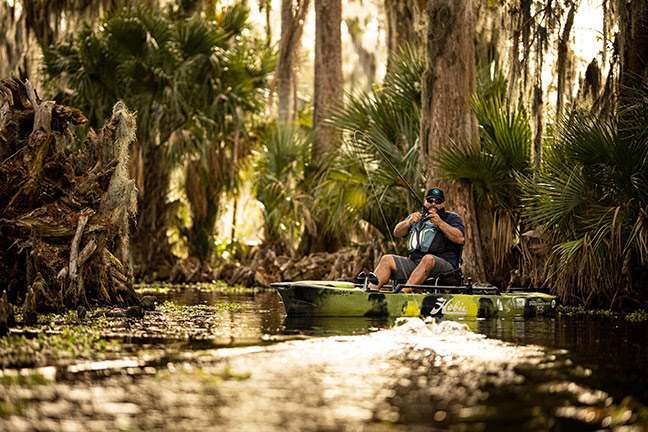
Mendez says swimbaits represent an important part of his regular fishing arsenal. “Any angler who wants to catch bigger bass more often should learn how to fish swimbaits,” he says, “and the first part of that process is understanding that there’s a lot of patience involved. When you’re working a big, two-to-eight-ounce swimbait, you may not get a lot of bites but the ones you get are mostly quality fish. Around here, that means something between five and 12 pounds. You’ve got to be willing to put in the time, the work, and the casts. That takes a level of patience that many anglers don’t have, but they payoff can literally be massive.”
Mendez says would-be swimbait anglers should also understand that swimbaits can be expensive and they’ll also likely need to invest in new gear. “There are a lot of different swimbaits on the market today selling for between $10 and $300 apiece,” he says, “and then you’ve got to have a rod that’s made to cast these baits that can weigh up to half a pound. So, there’s an investment to be made.”
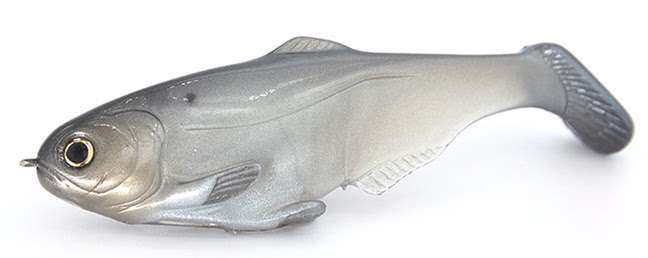
Mendez fishes a lot of weedy lakes, so he prefers soft plastic swimbaits that easily glide through the grass without becoming fouled. “The Huddleston’s are nice and a good value, and I like the Working Class Zero baits, too,” says Mendez, who most often fishes his swimbaits on steady retrieve with a 7.1:1 casting reel spooled with 20-pound fluorocarbon line. “You don’t want to go any faster than a 7.1:1 reel, and I like the fluoro line over braid because I think it helps the baits to run a bit deeper and I don’t need to worry about a knotted line/leader connection.

“The rod is really important,” Mendez says. “Whether you’re using a two-ounce lure or an eight-ounce lure, you’ve got to make sure your rod is rated and built to cast these beasts. St. Croix has leveraged their history and expertise in building musky rods to offer bass-swimbait anglers a bunch of exceptional options, but for my money, the new BAC710HF, BAC710XHF, and BAC710XXHF models in their updated BassX Series are my swimbait rods of choice. They’re rated for ¾-3 ounces, 2-5 ounces, and 4-8 ounces respectively, and are really well balanced and feel surprisingly light in the hand for such large, powerful rods. That balance and lightness makes a huge difference – as does the super-comfortable handle design – when you are casting and retrieving such large, heavy baits all day. With a retail price of just $150, I’d compare the performance of these BassX rods favorably against a lot of swimbait rods I’ve used costing more than three times as much. They also look awesome and you get a five-year warranty backed by great customer service from St. Croix.”
Deep Crankin’ with Mark Hooker, Montgomery, Texas
St. Croix Pro and educator, Mark Hooker, has enjoyed a career in the outdoors industry spanning nearly 40 years as a tournament angler and outfitter. He’s owned Web & Fin – specializing in duck hunting and bass fishing – since 1996 and has been a Social Studies Department Chair and teacher at Lake Creek High School in the Montgomery, Texas Independent School District for nearly 20 years. “The thing that I’m most gratified by is that I started the Montgomery ISD Fishing Team eight years ago,” says Hooker, who also serves as the standout team’s coach. “We have 92 young men and women on the team. In seven years of competition, we have won six conference championships, three regional championships, and a state championship, and we’ve accomplished this in one of the most competitive geographic regions of the country.”
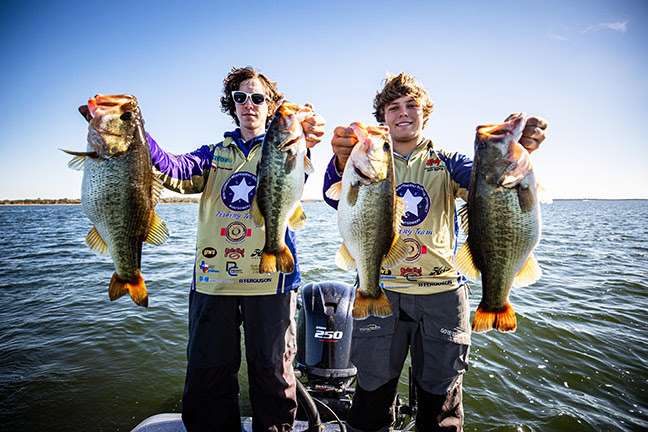
Hooker drives team success by encouraging his student athletes to become more complete anglers. That often requires keying in on the teaching of specialized techniques. “A lot of anglers can catch bass shallow, but struggle when they need to move offshore,” he says. “Chunking deep-diving crankbaits that can reach depths of over 20 feet is a bread-and-butter searching technique that can be a gateway to other deep-water presentations like jigs, dropshots and Carolina Rigs. These big baits can often trigger responses from individual fish that will fire up an entire school. It can also be a great to pick up kicker fish during a tournament, but there’s more to it that just casting and winding.”
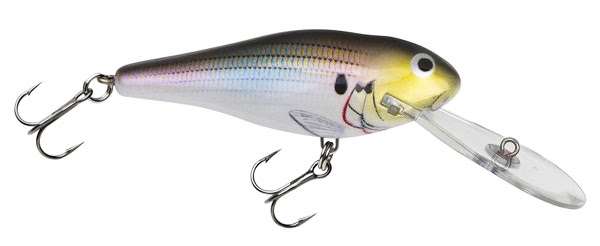
Hooker says having success with deep-diving cranks largely comes down to two things. “You’ve got to first identify where the bass are at using your electronics,” he advises. “What depth are most of the fish at and what are they relating to? You’ve got to put together the pieces of the puzzle involving depth, structure, forage, and current, then choose the best boat position to make the most effective presentations to those fish. Once you’ve made those decisions, the second thing is keeping the lure in that strike zone for as long as possible on every cast and retrieve.” Hooker says that means choosing the bait that runs at the right depth, deploying the right rod, reel and line combination, and also adjusting your cast and retrieve accordingly. “Generally you want to make long casts that go well beyond the school, then crank the lure down to the target depth quickly. You can also lower the rod tip to keep the lure ticking in the strike zone for longer.”
Hooker says the sinking properties and low visibility of fluorocarbon line make it an ideal match for this presentation. “Utilize a large-capacity reel with a lower gear ratio of 6.3:1 or even less if you can find one,” he says. “The spray-on product called Reel Magic works as advertised and is also really helpful here. It keeps the line more supple and with fewer kinks, which allows you to cast farther, which is paramount with this technique.”
He also says the right rod is really important. “Deep-diving crankbait fishing demands a longer rod for longer casts, with a more moderate action to absorb the slashing strikes, head shakes and runs,” he says. “You don’t get much stretch with fluorocarbon line, and because of the depth, you’re dealing with some extreme angles, so the forgiveness of your rod is what keeps those treble hooks attached to the fish. A good deep-crankin’ rod works for you, not against you, in all phases, from the long cast, to the retrieve, to managing the strike and ultimately winning the battle.”
Hooker and several of his student anglers recently helped St. Croix beta test the new BassX BAC74MHMF rod. “Knowing that our team would be targeting offshore schooling bass with deep diving crankbaits such as Strike King XD 5’s and 6’s, St. Croix came down last winter and brought half a dozen prototype 74MHMF BassX rods,” Hooker recalls. “They launched the 15-to-20-foot divers flawlessly and proved to be a deadly combination with our anglers, who caught well over 50 fish in the three-to-five-pound class. With a strong butt section and medium-heavy power to help winch up the big ones, these rods have the ideal length, power and action for the specialized work of deep crankin’. We’ve also found this particular rod to be perfect for ripping ½ – and ¾-ounce lipless crankbaits over grass flats with submerged vegetation on either heavy fluorocarbon or 50-pound braid.”

Aside from the specific performance of the BassX BAC74MHMF model, Hooker says he’s pleased that St. Croix has invested so much time, effort, and resources in reimagining the entire Bass-X line. “This is a complete series of bass rods with universal appeal because it delivers high performance and high quality without the high price,” he says. “St. Croix makes this possible because they control the entire process of research, development, manufacturing, and most importantly listening to anglers on what they would like to see. Some examples of listening to anglers evident in BassX includes the use of an all-new SCII carbon material that makes new-generation BassX rods both stronger and lighter, as well as the addition of St. Croix’s FRS technology – usually reserved for their more expensive rods – which makes new BassX rods even stronger and more durable yet. Other refinements like the new SeaGuide hybrid guide train contributes to increased durability and improved balance, and the new handles and ergonomics make each of these rods a joy to fish with. These new BassX rods are everything a high-performance bass rod should be at a price any angler can afford.

When you hit the water in the coming year, don’t limit yourself to the same old confidence lures and presentations. Instead, resolve to learning some new presentations that will make you a more versatile and effective bass angler. Heeding our pros’ advice and tips with respect to Jerkbaits, punchin’, swimbaits, and deep-diving crankbaits is a great place to start.
